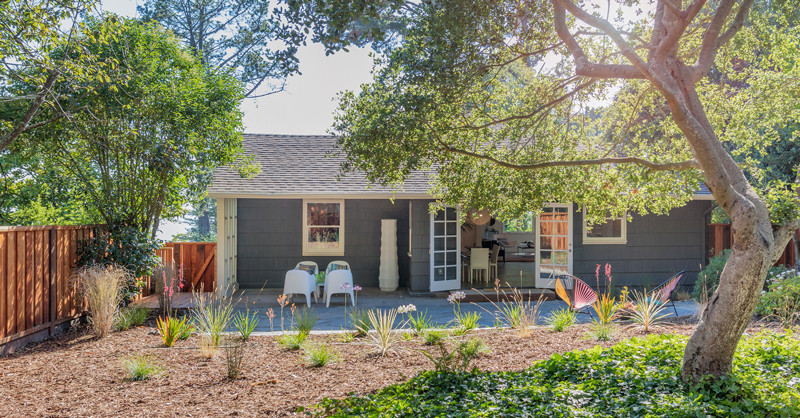
Changes to renting granny flats explained
On Friday 23 September 2022, the Queensland Government announced that property owners can now rent secondary dwellings, such as granny flats, to non-household members.
The government amended the Planning Regulation 2017 to support this change, with the intention of reviewing the legislation changes after three years.
What is a secondary dwelling?
The most common form of secondary dwelling is a granny flat. A secondary dwelling is an additional dwelling located within, attached to, or separate from the main dwelling located on the same lot of property. It is usually smaller than the main dwelling space. A secondary dwelling may be self-contained or may share facilities (such as a kitchen) with the main dwelling.
What do property owners need to do before renting out a secondary dwelling?
The property owner must (without limitation):
- obtain all relevant approvals before renting out a secondary dwelling, including ensuring they have development/building and council approvals
- ensure the secondary dwelling complies with smoke alarm requirements and all other health and safety regulations.
What tenancy agreements apply to renting out a secondary dwelling?
The type of tenancy agreement needed will depend on the set up of the property. If the secondary dwelling is rented as a self-contained unit where the tenant/resident has no access to the main house, the arrangement falls under a general tenancy agreement (Form 18a).
If the tenant/resident shares the kitchen or other facilities with other occupants of the house, the tenancy may fall under a rooming accommodation agreement (Form R18).
Examples of a secondary dwelling falling under a rooming accommodation agreement could be:
- a rental where a granny flat contains more than one bedroom and each bedroom has been rented separately, with the residents sharing the facilities contained within the flat
- a rental where the granny flat does not have a kitchen and the occupier is permitted to access the main house to use the kitchen or other facilities
When establishing a rooming accommodation agreement, it may be useful to set out house rules to avoid potential disputes.

What address should be on the tenancy agreement?
The address of the main property should be listed on the tenancy agreement unless local council has issued a separate address relating only to the secondary dwelling. The agreement should also clearly outline what building (or part of the building) is being rented. The local council can clarify the primary address of the property if there are multiple street frontages.
Should a new mailbox be installed for the secondary dwelling?
The property owner can choose to install a new mailbox, or they can come to an agreement with the tenant/resident about how the mail will be distributed. This should be agreed before the tenancy agreement is signed. To avoid confusion, it can be a good idea to add special terms to the tenancy agreement, setting out how the mail will be managed.
If the property owner wants to add a mailbox for the secondary dwelling, they should talk to their local council first. Local councils are the recognised authority for allocation and approval of numbering.
Can tenants in the secondary dwelling be charged for water?
Water can only be charged to the tenant if the secondary dwelling is:
- individually metered
- water efficient, and
- the tenancy agreement states that the tenant is paying for water consumption.
The property owner should ensure they pass water bills onto the tenant/resident in a timely manner.
There may be cases where a secondary dwelling is individually metered and the tenancy agreement states the tenant is paying for water but the premises is not water efficient. In this circumstance, the property owner must pay for a reasonable amount of water consumption and the tenant may be required to pay for excess water charges.
For more information, read our Water charging webpage or listen to our Water charges and leaks podcast episode.
Can tenants in the secondary dwelling be charged for other utilities?
The property owner and the tenant should negotiate and come to an agreement around how gas and electricity will be paid.
If the secondary dwelling is not individually metered, the tenancy agreement should outline how gas and/or electricity will be charged. The agreement should state:
- what service the tenant/resident is being charged for
- how the tenant/resident's share of the bill will be worked out
- how the tenant/resident should pay for the charges.
If there are no terms outlining these charges in the agreement, the property owner cannot charge the tenant for these services.
For more information, read our Charging for utilities webpage or listen to our Utilities podcast episode.
Who is responsible for garden maintenance?
If there is a shared garden, the property owner and the tenant/resident should come to an agreement around upkeep and include any requirements under special terms in the tenancy agreement.
These requirements should be as detailed as possible to avoid confusion or disputes between parties. For example, the agreement could outline what areas of the garden each party is responsible for and who supplies and maintains equipment.
Useful resources
You can find out more about renting a secondary dwelling via the RTA’s secondary dwellings webpage or the Department of State Development, Infrastructure, Local Government and Planning’s changes to secondary dwellings webpage.
Note: While the RTA makes every reasonable effort to ensure that information on this website is accurate at the time of publication, changes in circumstances after publication may impact on the accuracy of material. This disclaimer is in addition to and does not limit the application of the Residential Tenancies Authority website disclaimer.

